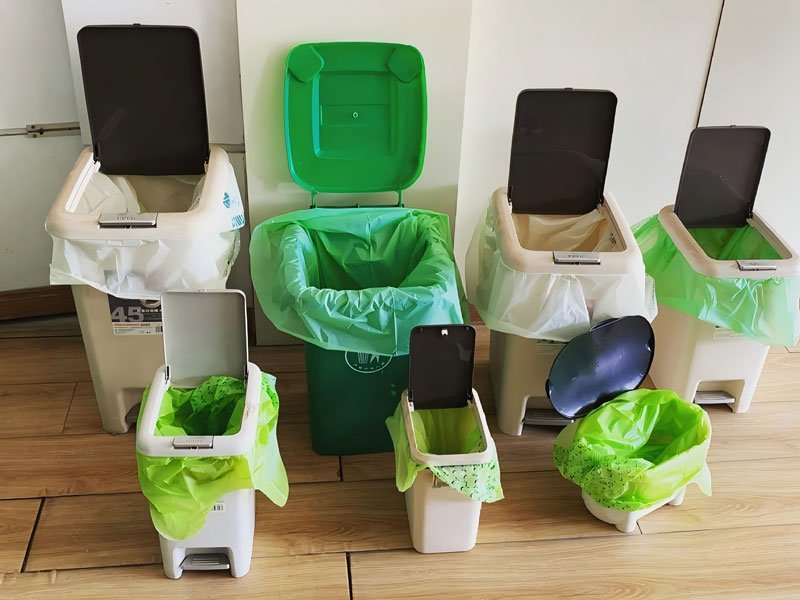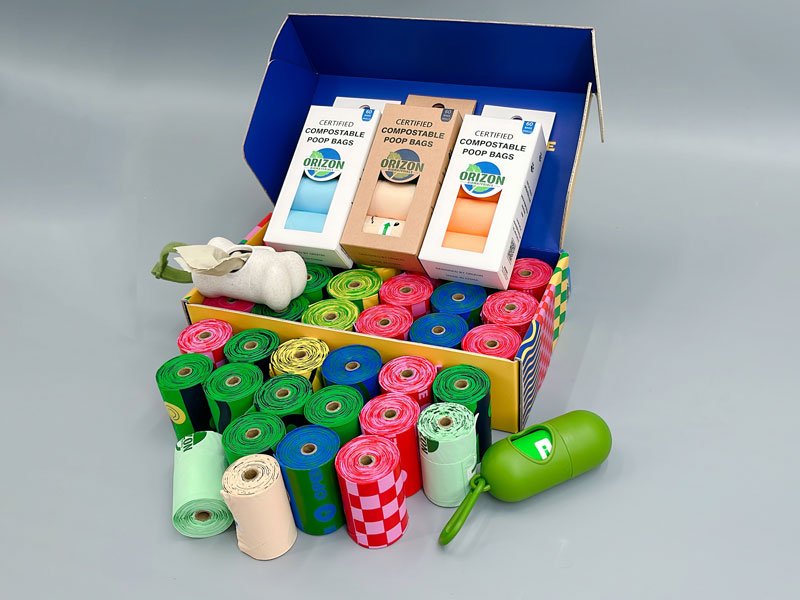Choosing the wrong compostable bag supplier can cost you thousands in failed products and compliance fines. Here’s how to pick a partner that delivers quality and compliance without headaches.
To select the right custom compostable bags supplier, verify certifications (BPI, OK COMPOST), assess production capabilities, evaluate material performance, and confirm sustainability practices. Prioritize manufacturers with 5+ years’ experience, MOQ flexibility, and proven success in your target market.

Every year, businesses waste $2.3 million on non-compliant "eco-friendly" packaging. Don’t become another statistic—use this professional buyer’s checklist to make an informed decision.
What Certifications Should a Reliable Compostable Bag Supplier Have?
The EPA reports 60% of "compostable" claims are misleading. Without proper certifications, your bags might end up in landfills anyway.
A qualified supplier must hold BPI (US), OK COMPOST INDUSTRIAL (EU), and AS 5810 (Australia) certifications. For home compostable options, look for TUV Austria’s OK COMPOST HOME. These ensure compliance with ASTM D6400/EN 13432 standards.

Breaking Down Certification Requirements
Regional Compliance Essentials
| Market | Required Certifications | Key Standards |
|---|---|---|
| USA | BPI Certified | ASTM D6400 |
| EU | TUV OK Compost | EN 13432 |
| AU/NZ | AS 5810 | Home Compost |
Certification Verification Process
- Request current certificates (not expired)
- Check certification scope covers your product type
- Verify through certifying body’s online database
- Confirm annual audit compliance
Material matters - our 16 years of manufacturing shows PLA/PBAT blends degrade 90% faster than starch-only options in industrial facilities. Always request third-party disintegration test reports.
How Do You Evaluate a Supplier’s Production Capability?
A Sydney cafe learned the hard way when their supplier couldn’t scale from samples to bulk orders, causing a 3-month stockout.
Assess 5 key production factors: MOQ flexibility (500kg+ for startups), 15-25 day lead times, customization options (size/thickness/printing), specialized equipment for handles/zippers, and ISO 9001-certified QC processes.

Production Capacity Checklist
Equipment Capabilities
- 16+ extrusion lines for consistent thickness
- Offset printing for brand customization
- Handle attachment systems
- Zipper installation units
Quality Control Measures
| Stage | Check Points | Tolerance |
|---|---|---|
| Raw Material | MFI, Density | ±2% |
| Extrusion | Thickness (30-100μm) | ±5μm |
| Printing | Color matching (Pantone) | ΔE<3 |
| Final Product | Seal strength | >15N/15mm |
Our factory runs 24/7 with 20,000㎡ capacity, producing 8 million bags/month. Always request a virtual factory tour—reputable suppliers will show real-time production, not just glossy brochures.
Why Does Material Composition Impact Performance?
A Melbourne grocery chain recalled 50,000 bags last year when "compostable" produce bags tore under 2kg loads.
The ideal blend contains 40-60% PLA for rigidity, 30-50% PBAT for flexibility, and <10% starch. This ensures 6-12 month shelf life while meeting 90% degradation in 180 days under composting conditions.

Material Performance Comparison
Physical Properties
| Blend Type | Tensile Strength | Tear Resistance | Degradation Time |
|---|---|---|---|
| PLA Heavy | 35MPa | Medium | 200 days |
| PBAT Dominant | 25MPa | High | 150 days |
| Starch-Based | 15MPa | Low | 90 days |
Real-World Applications
- Dog waste bags: 70% PBAT for stretch
- Courier bags: 55% PLA for puncture resistance
- Food service bags: Antimicrobial additives
We conduct accelerated aging tests simulating 12 months’ storage. Ask suppliers for degradation videos—real proof beats technical datasheets.
What Sustainability Metrics Should You Verify?
Greenwashing fines hit $1.2M in Australia last year. Beyond certifications, you need tangible sustainability proof.
Require: 1) GRS-certified raw materials, 2) carbon footprint report (under 3kg CO2/kg bags), 3) renewable energy usage (minimum 30%), and 4) zero-waste production audits.

Sustainability Audit Checklist
Environmental Indicators
| Metric | Industry Average | Best Practice |
|---|---|---|
| Energy use/kg | 8kWh | 5kWh |
| Water consumption | 15L/kg | 8L/kg |
| Production waste | 12% | <5% |
Verification Steps
- Raw material CO2 certificates
- Factory energy bills (renewable %)
- Waste management contracts
- Recycling rate reports
Our solar-powered facility recycles 98% of process water. Demand more than sustainability claims—ask for monthly impact reports.
Conclusion
Choosing a compostable bag supplier requires verifying certifications, production capacity, material science, and genuine sustainability—critical factors we’ve perfected over 16 years serving global brands.






